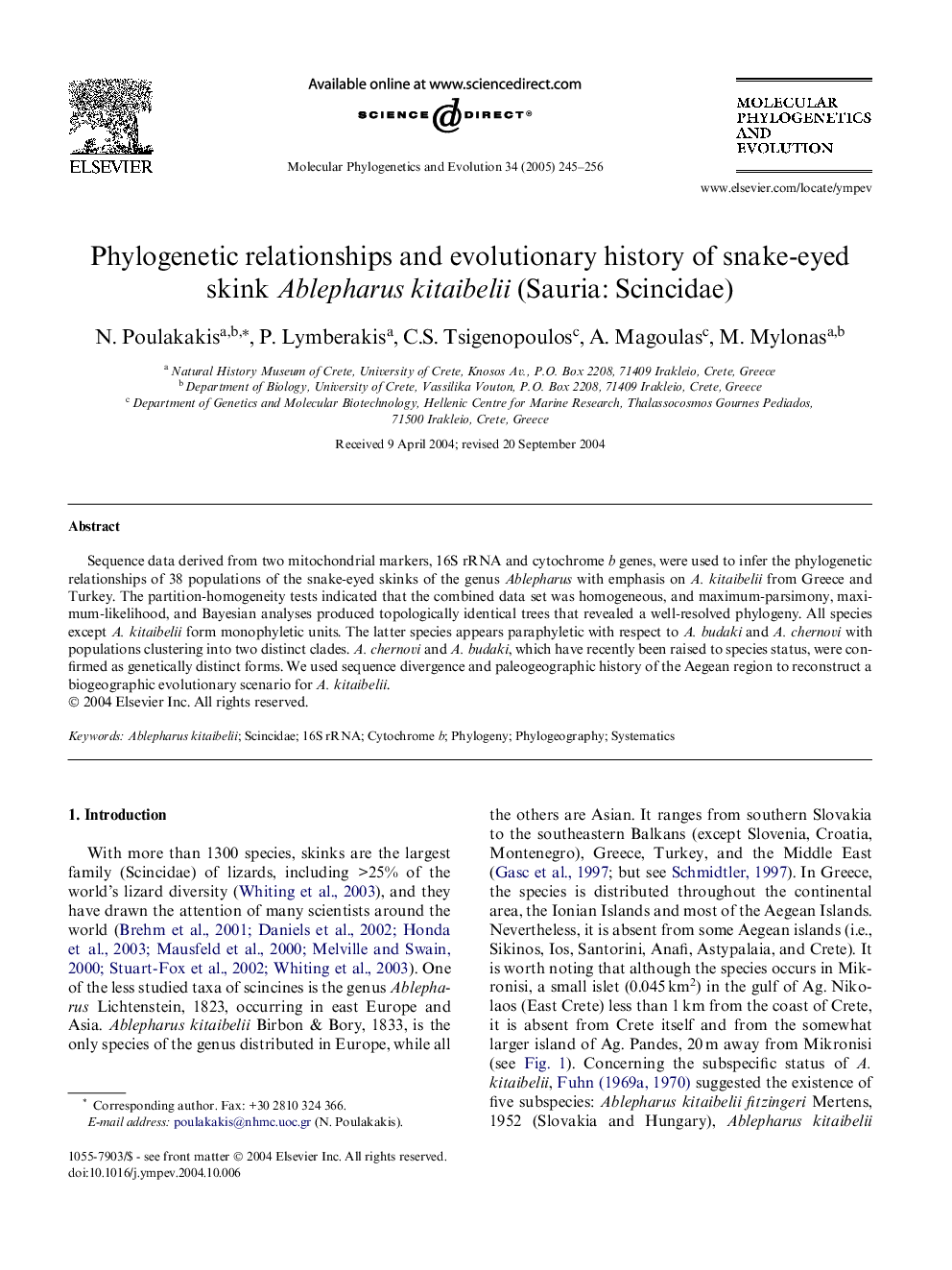| Article ID | Journal | Published Year | Pages | File Type |
|---|---|---|---|---|
| 9143259 | Molecular Phylogenetics and Evolution | 2005 | 12 Pages |
Abstract
Sequence data derived from two mitochondrial markers, 16S rRNA and cytochrome b genes, were used to infer the phylogenetic relationships of 38 populations of the snake-eyed skinks of the genus Ablepharus with emphasis on A. kitaibelii from Greece and Turkey. The partition-homogeneity tests indicated that the combined data set was homogeneous, and maximum-parsimony, maximum-likelihood, and Bayesian analyses produced topologically identical trees that revealed a well-resolved phylogeny. All species except A. kitaibelii form monophyletic units. The latter species appears paraphyletic with respect to A. budaki and A. chernovi with populations clustering into two distinct clades. A. chernovi and A. budaki, which have recently been raised to species status, were confirmed as genetically distinct forms. We used sequence divergence and paleogeographic history of the Aegean region to reconstruct a biogeographic evolutionary scenario for A. kitaibelii.
Related Topics
Life Sciences
Agricultural and Biological Sciences
Ecology, Evolution, Behavior and Systematics
Authors
N. Poulakakis, P. Lymberakis, C.S. Tsigenopoulos, A. Magoulas, M. Mylonas,
